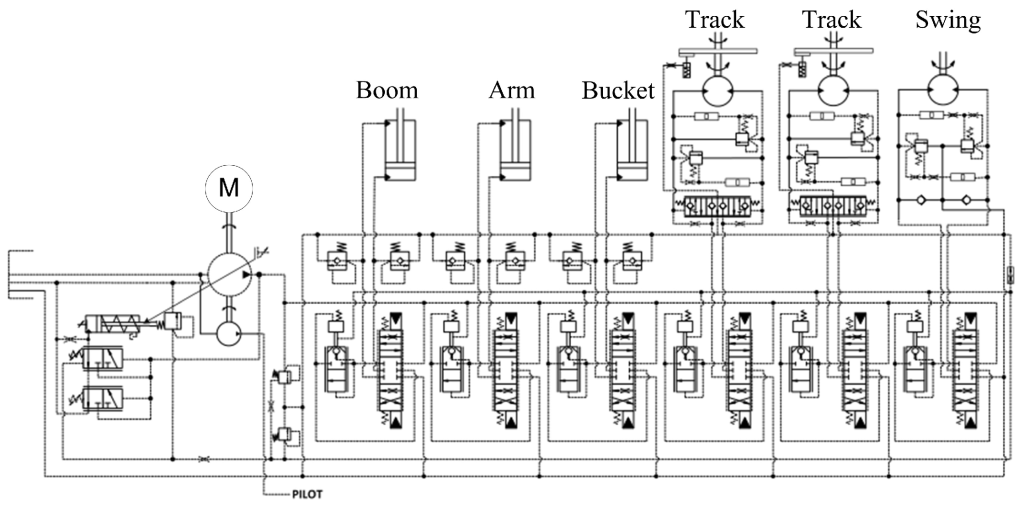The hydraulic system of an excavator is a critical component that enables the machine to perform a wide range of tasks with precision and power. By examining a detailed diagram of an excavator hydraulic system, one can gain valuable insights into how hydraulic power is harnessed and distributed within the machine. Let’s explore the key components and functions of an excavator hydraulic system based on a typical diagram:

Components of an Excavator Hydraulic System:
Hydraulic Pump:
The hydraulic pump is responsible for converting mechanical power from the engine into hydraulic power. It generates high-pressure hydraulic fluid that is essential for operating various hydraulic components on the excavator.
Control Valves:
excavator hydraulic system diagram

Control valves regulate the flow and direction of hydraulic fluid within the system. They control the actuation of hydraulic cylinders and motors, allowing the operator to manipulate the movement of the boom, arm, bucket, and other attachments.
Hydraulic Cylinders:
Hydraulic cylinders are devices that convert hydraulic pressure into linear mechanical force. In an excavator, cylinders are used to control the movement of the boom, arm, and bucket, enabling precise positioning and operation of the machine.
Hydraulic Motors:
Hydraulic motors convert hydraulic pressure into rotational mechanical energy. In an excavator, hydraulic motors are commonly used to drive the machine’s tracks or wheels, enabling it to move across the job site.
Hydraulic Hoses and Fittings:
Hydraulic hoses and fittings transport hydraulic fluid between the different components of the system. They must be properly sized, routed, and maintained to ensure efficient operation and prevent leaks.
Reservoir and Filters:
The hydraulic reservoir stores hydraulic fluid for the system, while filters help remove contaminants and maintain fluid cleanliness. Clean hydraulic fluid is essential for the proper functioning and longevity of the system components.
Cooling System:
Excavator hydraulic systems often include a cooling system to dissipate heat generated during operation. This helps prevent overheating and ensures the system operates within optimal temperature ranges.
Functioning of an Excavator Hydraulic System:
When the operator manipulates the controls in the operator cab, the hydraulic system responds by directing pressurized hydraulic fluid to specific components based on the desired movement or function. For instance, activating the controls for the boom will cause the hydraulic pump to send fluid to the corresponding cylinder, extending or retracting the boom as needed.
Understanding the layout and operation of an excavator’s hydraulic system is crucial for operators to work efficiently and safely. Regular maintenance, inspection, and troubleshooting of the hydraulic system can help prevent breakdowns, ensure optimal performance, and extend the lifespan of the excavator. By delving into the intricacies of the hydraulic system through a diagram, individuals can appreciate the engineering excellence that powers these versatile machines